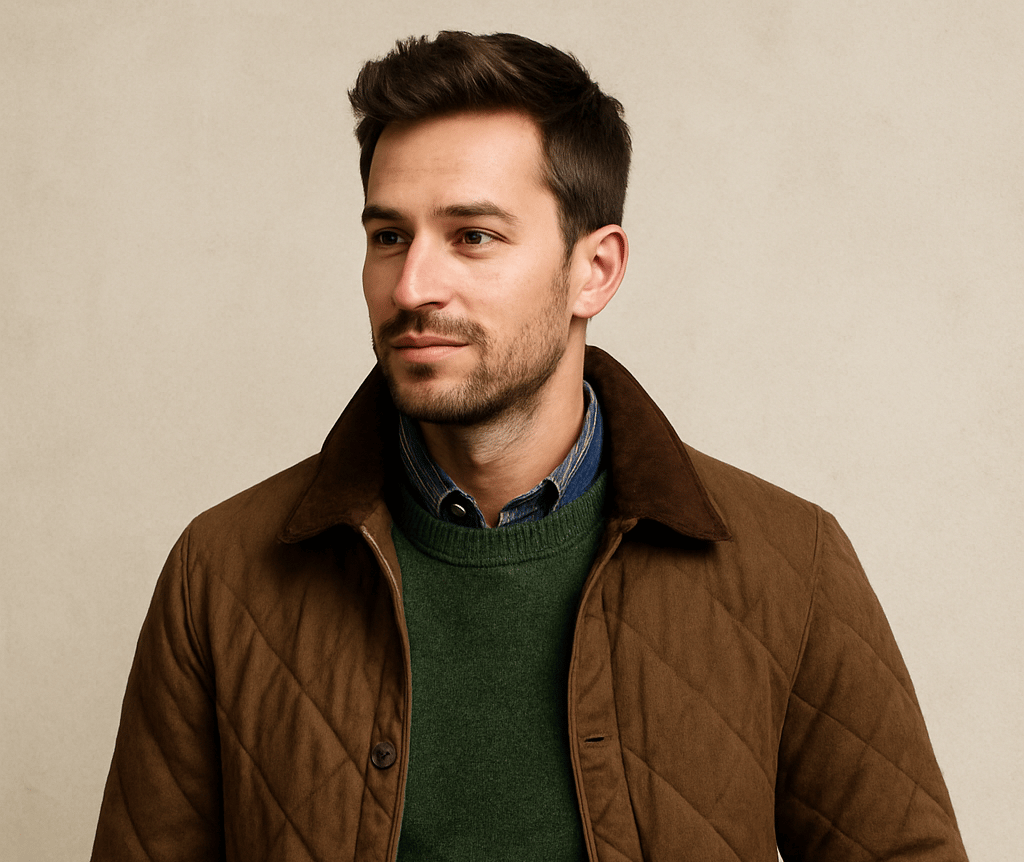How to Layer Men’s Clothes for Style and Comfort
How to Layer Men’s Clothes for Style and Comfort
7/16/2025


How to Layer Men’s Clothes for Style and Comfort
Layering clothes isn’t just about keeping warm—it’s a powerful style tool. Mastering how to layer men’s clothes for style and comfort can transform your look from simple to sophisticated, no matter the season. Whether you’re dealing with crisp fall weather, blazing summer heat, or freezing winter winds, the right layers will keep you comfortable and stylish.
Let’s dive into the secrets of layering so you can dress well and feel great.
Why Layering Matters in Men’s Style
Layering offers two big advantages:
✅ Functionality: It keeps you comfortable by letting you add or remove pieces as temperatures change.
✅ Style: Layers add depth, texture, and color to your outfit, making you look intentional and put together.
Whether you’re dressing for a business meeting or a casual coffee date, layering gives you options—and options are always in style.
The Fundamentals of Layering Men’s Clothes
Layering isn’t as simple as throwing on random pieces. There’s a science (and an art) to it.
Understanding Base, Mid, and Outer Layers
Think of layering like building a house—each layer has a job.
Base Layer: The piece closest to your skin. Think T-shirts, Henleys, or lightweight button-ups. This layer should be breathable and moisture-wicking.
Mid Layer: Provides warmth and texture. Examples include sweaters, cardigans, and light jackets.
Outer Layer: The protective layer against wind, rain, or cold. This could be a coat, blazer, trench coat, or parka.
Choosing the Right Fabrics for Layering
Different fabrics serve different purposes:
Cotton: Soft and breathable, great for base layers.
Wool: Warm and insulating, perfect for mid layers.
Fleece: Lightweight warmth, good for casual mid layers.
Leather: Stylish outerwear with a rugged edge.
Technical fabrics: Great for outer layers in active or outdoor settings.
Avoid piling too many thick fabrics on top of each other—it creates bulk and restricts movement.
Color Coordination When Layering
Colors make or break a layered look. Stick to these rules:
Keep base layers neutral.
Add pops of color in mid layers.
Use darker shades for outer layers for a slimming effect.
For a sophisticated look, stick to a palette of 2-3 complementary colors.
Layering for Different Seasons
Layering isn’t just for cold weather. Here’s how to adjust your strategy year-round.
How to Layer Clothes for Spring
Spring weather flips between warm sun and cool breezes.
Base: Lightweight cotton shirt.
Mid: Cardigan or light sweater.
Outer: Trench coat or lightweight jacket.
Pastel colors work beautifully in spring layers.
How to Layer Clothes for Summer Without Overheating
Yes, you can layer in summer!
Base: Breathable T-shirt.
Mid: Unlined shirt jacket or overshirt.
Outer: Optional—light linen blazer for evenings.
Choose fabrics like linen or lightweight cotton to stay cool.
How to Layer Clothes for Fall
Fall is prime layering season.
Base: Long-sleeve tee or Henley.
Mid: Flannel shirt or chunky knit sweater.
Outer: Denim jacket, bomber, or lightweight coat.
Earth tones like olive, brown, and rust look fantastic in fall.
How to Layer Clothes for Winter Warmth
Winter layering keeps you warm without bulk.
Base: Thermal shirt.
Mid: Wool sweater or fleece.
Outer: Peacoat, parka, or wool overcoat.
Accessories like scarves and gloves complete winter layering.
Stylish Layering Pieces Every Man Should Own
Building a versatile wardrobe means owning pieces you can layer effortlessly.
Lightweight Jackets
Denim jackets
Bomber jackets
Harrington jackets
These add structure without too much bulk.
Versatile Sweaters and Cardigans
Crewneck sweaters
V-neck sweaters
Cardigans for smart casual looks
These work under jackets or over shirts for depth and texture.
Button-Up Shirts and Henleys
Classic Oxford shirts
Chambray shirts
Henleys for a rugged vibe
These can be base or mid layers, depending on the season.
Vests and Gilets
Perfect for fall and spring, vests add warmth without restricting movement.
Common Layering Mistakes to Avoid
1. Too Many Thick Layers: You’ll overheat and look bulky.
2. Clashing Colors or Patterns: Keep your palette simple and cohesive.
3. Ignoring Proportion: Layer longer pieces under shorter ones for balance.
4. Skipping Fabric Consideration: Avoid stacking heavy materials like wool on wool unless it’s very cold.
FAQs About Layering Men’s Clothes
Q1: Can you layer clothes in summer without sweating?
Yes! Use lightweight fabrics like linen and avoid thick mid layers.
Q2: Should outer layers always be darker than inner layers?
Not always—but darker outer layers tend to be slimming and versatile.
Q3: How many layers should you wear in winter?
Typically three: base, mid, and outer, plus accessories for extra warmth.
Q4: What’s the best fabric for layering in fall?
Flannel, cotton, and lightweight wool are perfect fall options.
Q5: Can you mix patterns when layering?
Yes—but balance is key. Pair a patterned piece with solids or subtle textures.
Q6: Are vests necessary for layering?
Not essential, but they’re great for adding warmth without bulk.
Conclusion
Mastering how to layer men’s clothes for style and comfort takes practice, but once you learn the basics, you’ll look sharp and feel comfortable all year. Remember—good layering is about balance, color, and fabric choices. So go experiment, and layer up in style!

